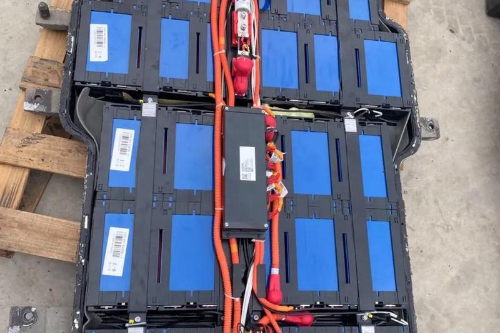Can Liquid Batteries Make Grid Scale Energy Storage Possible?
An electrical battery comprises electrochemical cells. It includes a cathode that serves as the positive terminal and an anode that serves as the negative terminal. These electrodes convert stored chemical energy into electrical energy. Grid energy storage stores electricity on a large scale within an electrical network. It is a fact that electricity cannot be stored literally, as is the case with conventional battery cells that reserve energy.
In contrast to a conventional battery, the primary component of a liquid battery is its liquid. The remaining parts are two metal electrodes that exist in liquid form and enclose a molten salt electrolyte. The negative electrode floats atop the electrolyte, whereas the positive electrode settles at the bottom. A difference in the composition of the two metals yields a voltage. The battery operates at temperatures in the hundreds of degrees. This condition ensures that its contents remain in liquid form.
Professor Donald Sadoway and his then doctoral student David Bradwell first demonstrated this battery using antimony and magnesium with a salt electrolyte. The battery exhibits low capacity loss over time. This feature is important for companies procuring devices for extended periods. The large-scale design requires fewer wires and connections. This reduces potential failure points.
A liquid battery stores electricity when production exceeds demand. The stored energy is released when demand surpasses production. Consequently, electricity generation remains at a stable level. This stability allows fuel-based power stations to operate efficiently at a constant production level.
These liquid batteries can harness and store energy from intermittent sources such as photovoltaic systems and wind turbines. The amount of electricity generated varies with the season, time of day, and weather conditions. Liquid batteries can provide large-scale storage. However, their performance and associated costs remain under evaluation.

 Bars
Bars
 Beads & Spheres
Beads & Spheres
 Bolts & Nuts
Bolts & Nuts
 Crucibles
Crucibles
 Discs
Discs
 Fibers & Fabrics
Fibers & Fabrics
 Films
Films
 Flake
Flake
 Foams
Foams
 Foil
Foil
 Granules
Granules
 Honeycombs
Honeycombs
 Ink
Ink
 Laminate
Laminate
 Lumps
Lumps
 Meshes
Meshes
 Metallised Film
Metallised Film
 Plate
Plate
 Powders
Powders
 Rod
Rod
 Sheets
Sheets
 Single Crystals
Single Crystals
 Sputtering Target
Sputtering Target
 Tubes
Tubes
 Washer
Washer
 Wires
Wires
 Converters & Calculators
Converters & Calculators
 Write for Us
Write for Us

 Chin Trento
Chin Trento



